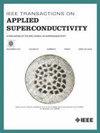基于铱的过渡边缘传感器的锝调制
IF 1.7
3区 物理与天体物理
Q3 ENGINEERING, ELECTRICAL & ELECTRONIC
引用次数: 0
摘要
本文章由计算机程序翻译,如有差异,请以英文原文为准。
Tc Modulation on Iridium-Based Transition Edge Sensor
Iridium is one of the most chemically stable materials and, therefore, suitable for high-performance transition edge sensor (TES) detectors for space applications, where long-term stability (spanning around five to ten years) is required. Thanks to their high stability, these TES detectors could be employed for high-end technological applications, such as nuclear/particle physics, single photon, and X-ray detection. Studying Tc modulation induced via surface modifications and patterning is an important aspect for the fine-tuning of these detectors. Focused ion beam (FIB) is a suitable method to pattern the material surfaces up to the nanometric scale, which can be applied for material characterization. Thus, this method has been applied in our work to characterize the superconductive transition behavior of 100-nm-thick Ir films (grown on a Si substrate). Here, we report a mechanism to modulate Tc after FIB patterning. Periodic holes forming either hexagonal or square arrays, with various hole-to-hole distances, were realized and characterized at low temperature. A preliminary simulation has been reported studying the possible behavior of Tc after FIB patterning.
求助全文
通过发布文献求助,成功后即可免费获取论文全文。
去求助
来源期刊

IEEE Transactions on Applied Superconductivity
工程技术-工程:电子与电气
CiteScore
3.50
自引率
33.30%
发文量
650
审稿时长
2.3 months
期刊介绍:
IEEE Transactions on Applied Superconductivity (TAS) contains articles on the applications of superconductivity and other relevant technology. Electronic applications include analog and digital circuits employing thin films and active devices such as Josephson junctions. Large scale applications include magnets for power applications such as motors and generators, for magnetic resonance, for accelerators, and cable applications such as power transmission.
 求助内容:
求助内容: 应助结果提醒方式:
应助结果提醒方式:


